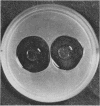Abstract
A method has been developed for measuring fibrinolytic activity in a single layer of cells--for example, venous endothelium or peritoneal mesothelium. A single layer of cells was collected on a gelatin disc, incubated on a fibrin plate for 24 h, and the resulting area of lysis measured. This was converted to a measure of fibrinolytic activity expressed in Ploug units of urokinase by reference to areas of lysis created by standard amounts of urokinase placed on similar fibrin plates. The method has been used for measuring fibrinolytic activity in venous endothelium and peritoneal mesothelium and has demonstrated that the activity in a single layer of endothelial cells is only about one-quarter of that in an equivalent area of whole vein wall. It has also shown that peritoneal fibrinolytic activity is reduced after peritoneal trauma. This method maybe useful in the investigation of the fibrinolytic system in a variety of pathological conditions--for example, thrombosis and intraperitoneal adhesions.
Full text
PDF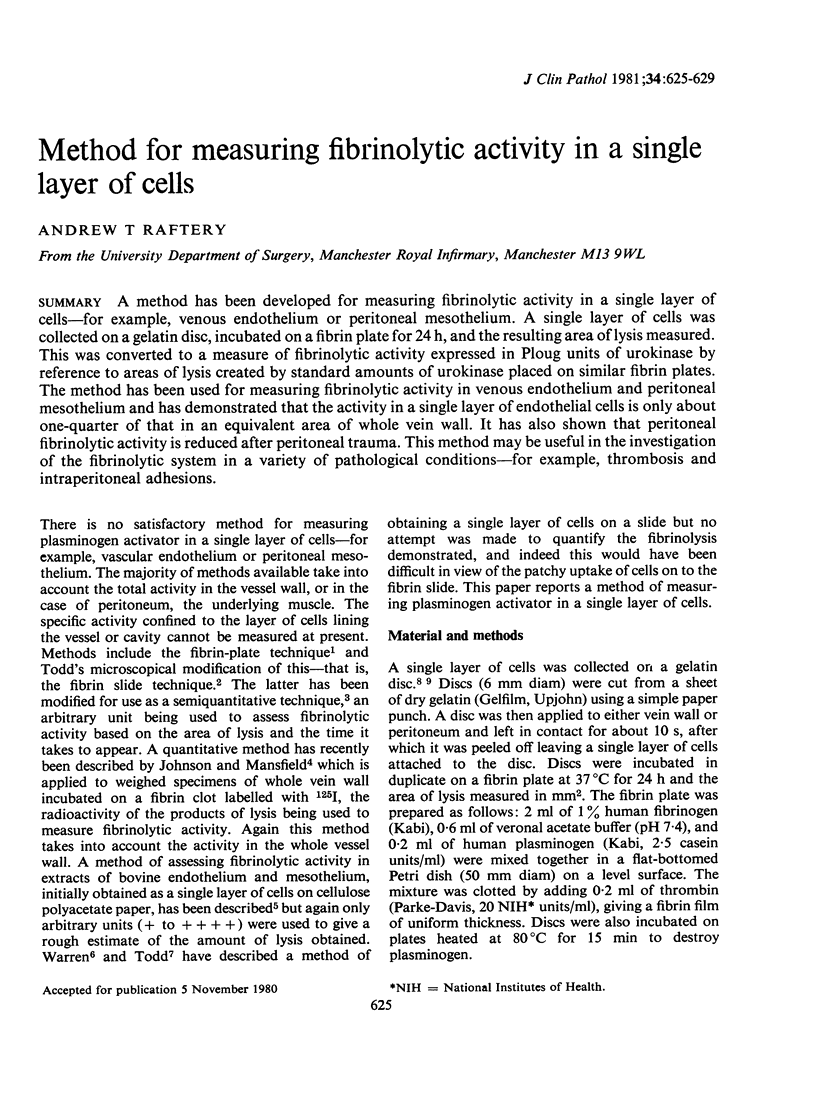
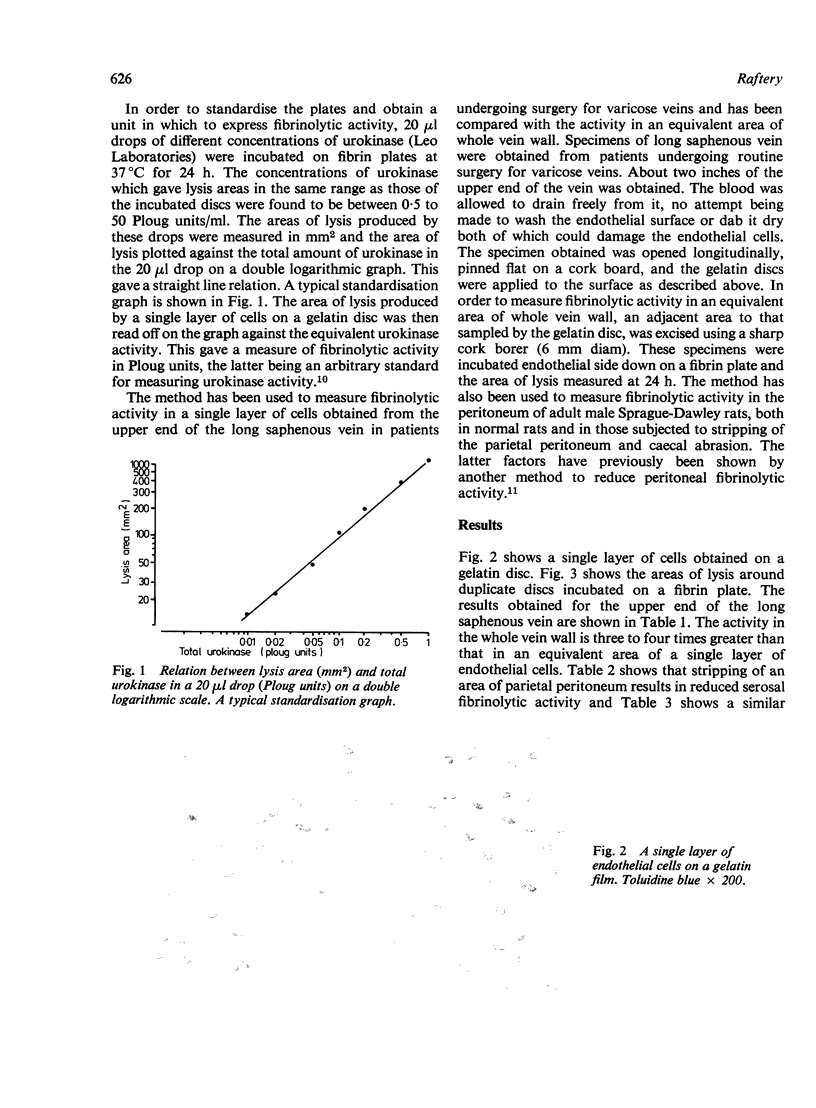
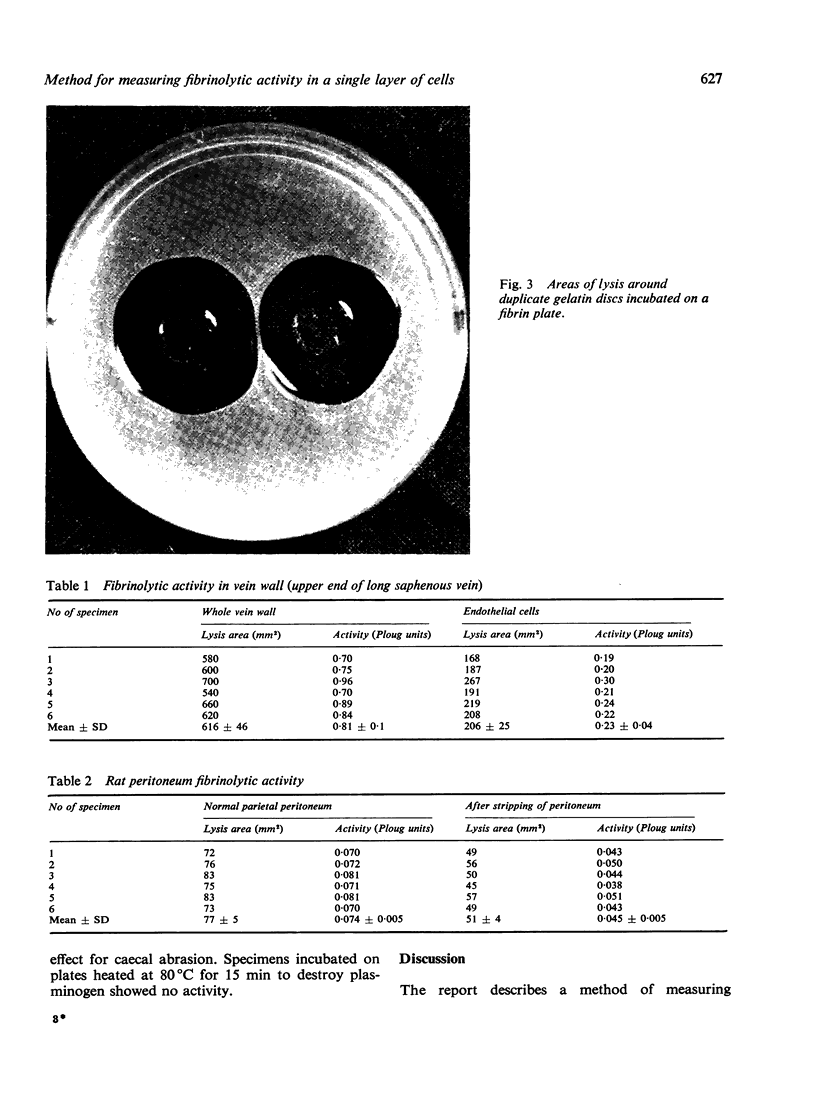
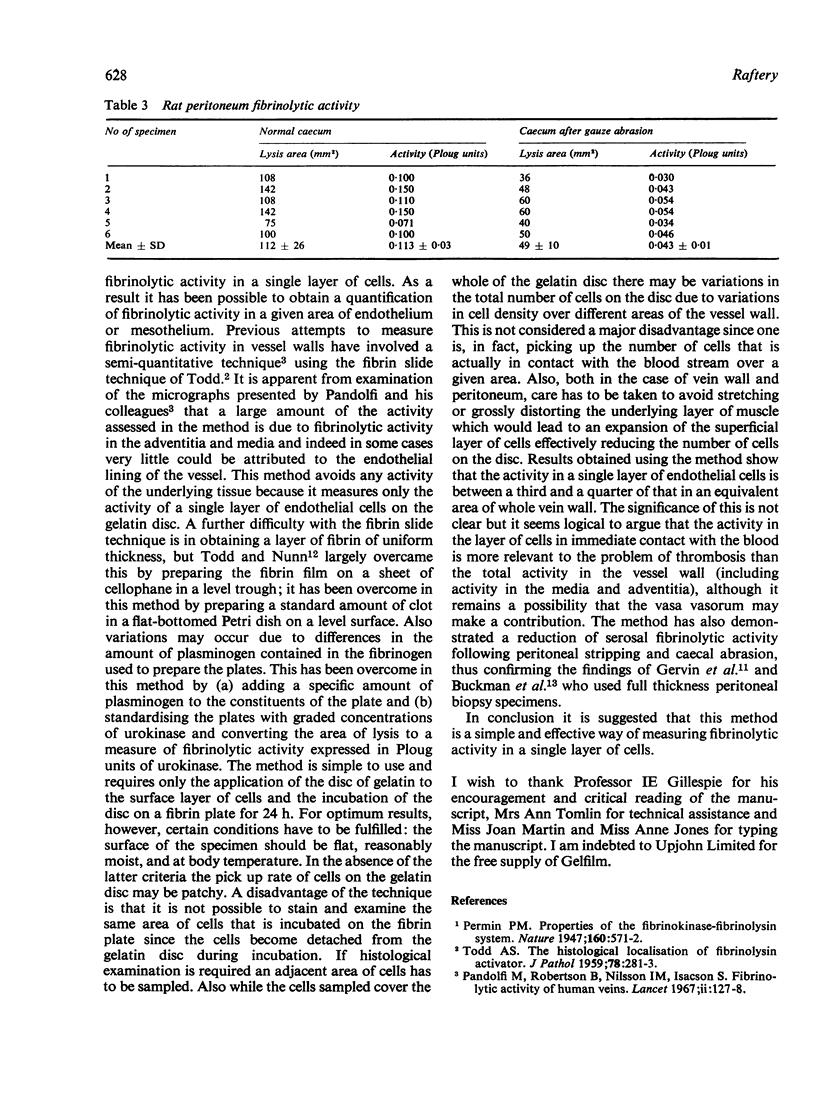
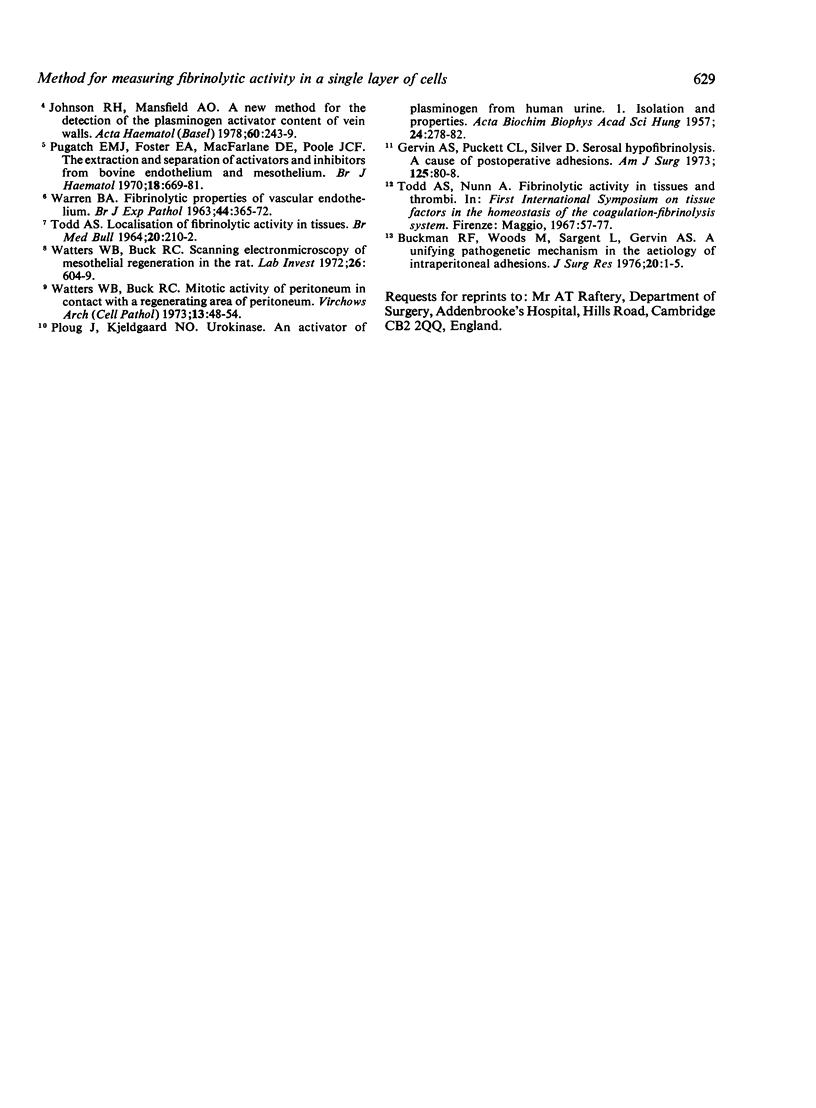
Images in this article
Selected References
These references are in PubMed. This may not be the complete list of references from this article.
- Buckman R. F., Woods M., Sargent L., Gervin A. S. A unifying pathogenetic mechanism in the etiology of intraperitoneal adhesions;. J Surg Res. 1976 Jan;20(1):1–5. doi: 10.1016/0022-4804(76)90075-5. [DOI] [PubMed] [Google Scholar]
- Gervin A. S., Puckett C. L., Silver D. Serosal hypofibrinolysis. A cause of postoperative adhesions. Am J Surg. 1973 Jan;125(1):80–88. doi: 10.1016/0002-9610(73)90011-1. [DOI] [PubMed] [Google Scholar]
- Johnson R. H., Mansfield A. O. A new method for the detection of the plasminogen activator content of vein walls. Acta Haematol. 1978;60(4):243–249. doi: 10.1159/000207720. [DOI] [PubMed] [Google Scholar]
- PLOUG J., KJELDGAARD N. O. Urokinase an activator of plasminogen from human urine. I. Isolation and properties. Biochim Biophys Acta. 1957 May;24(2):278–282. doi: 10.1016/0006-3002(57)90194-4. [DOI] [PubMed] [Google Scholar]
- Pandolfi M., Nilsson I. M., Robertson B., Isacson S. Fibrinolytic activity of human veins. Lancet. 1967 Jul 15;2(7507):127–128. doi: 10.1016/s0140-6736(67)92964-9. [DOI] [PubMed] [Google Scholar]
- Pugatch E. M., Foster E. A., Macfarlane D. E., Poole J. C. The extraction and separation of activators and inhibitors of fibrinolysis from bovine endothelium and mesothelium. Br J Haematol. 1970 Jun;18(6):669–681. doi: 10.1111/j.1365-2141.1970.tb01592.x. [DOI] [PubMed] [Google Scholar]
- TODD A. S. LOCALIZATION OF FIBRINOLYTIC ACTIVITY IN TISSUES. Br Med Bull. 1964 Sep;20:210–212. doi: 10.1093/oxfordjournals.bmb.a070333. [DOI] [PubMed] [Google Scholar]
- TODD A. S. The histological localisation of fibrinolysin activator. J Pathol Bacteriol. 1959 Jul;78:281–283. doi: 10.1002/path.1700780131. [DOI] [PubMed] [Google Scholar]
- WARREN B. A. FIBRINOLYTIC PROPERTIES OF VASCULAR ENDOTHELIUM. Br J Exp Pathol. 1963 Aug;44:365–372. [PMC free article] [PubMed] [Google Scholar]
- Watters W. B., Buck R. C. Mitotic activity of peritoneum in contact with a regenerating area of peritoneum. Virchows Arch B Cell Pathol. 1973 May 15;13(1):48–54. doi: 10.1007/BF02889296. [DOI] [PubMed] [Google Scholar]
- Watters W. B., Buck R. C. Scanning electron microscopy of mesothelial regeneration in the rat. Lab Invest. 1972 May;26(5):604–609. [PubMed] [Google Scholar]




